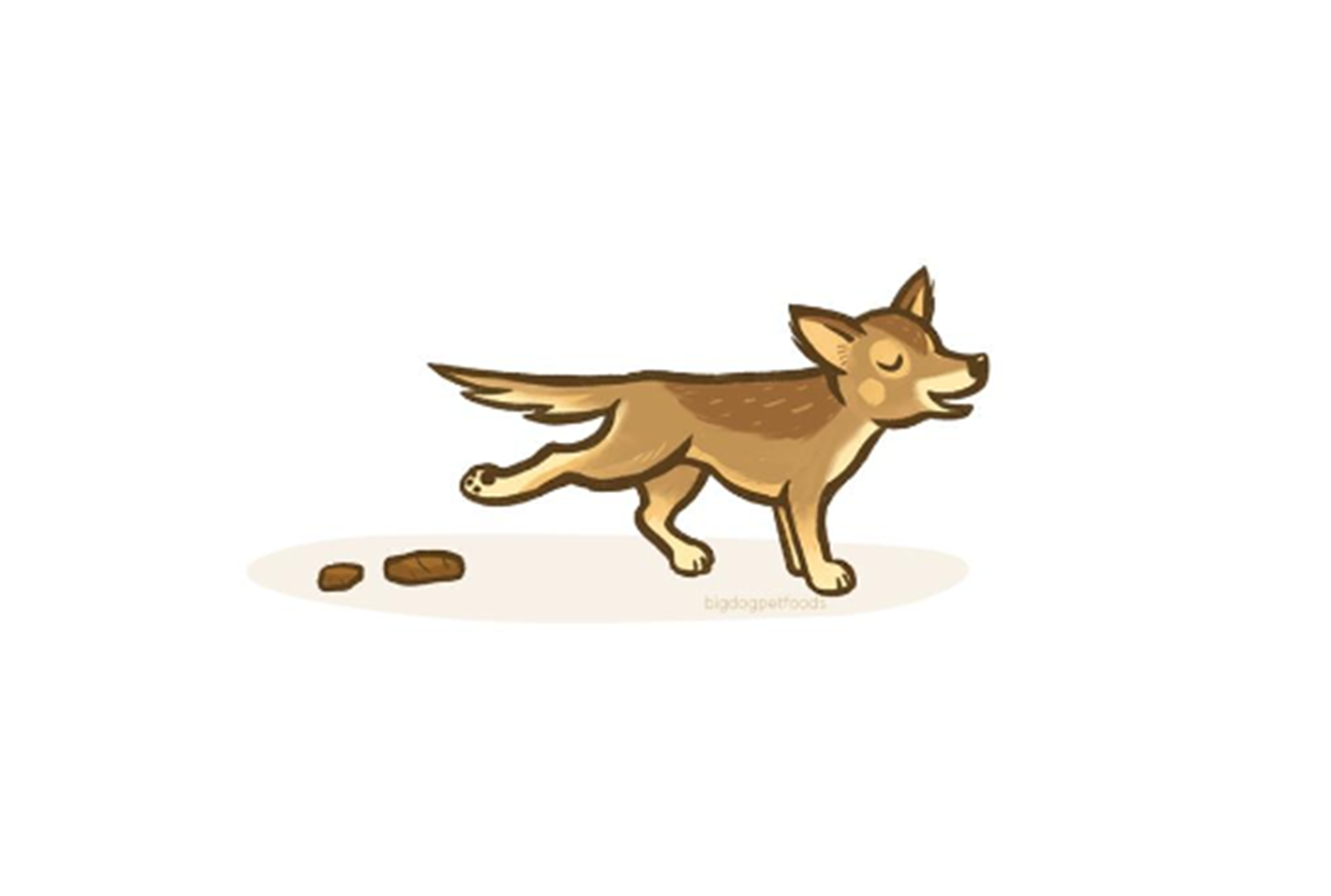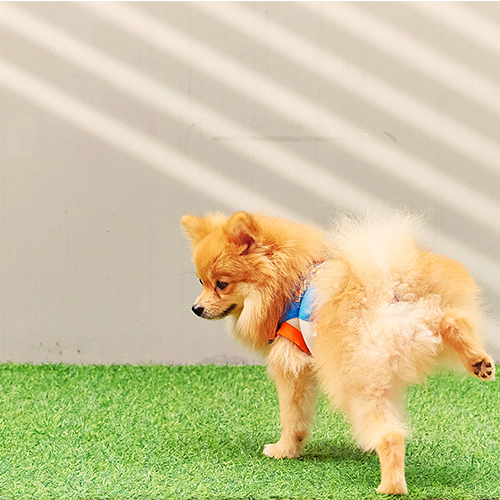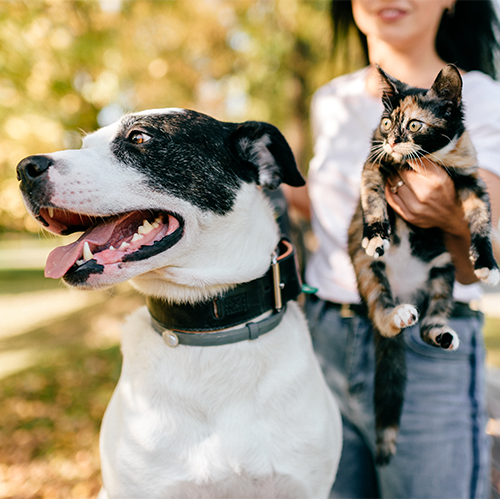1. Colour
Colour can give a great insight into your dog’s health and digestive system. You should be looking for a light to dark brown colour in your dog’s stools – the perfect poo.
It is common for raw-fed dogs to produce stools that turn white within 24 hours however if your pup’s stools are being released with a white, chalk like consistency this can be caused by too much calcium (excess bones) in their diet.
Stools with a grey colour to them can be a sign of too much fat being present in their diet or an issue with their pancreas. This is a tricky one to determine yourself, you may want to use our DooDooDiary to track their diet and digestion, but we recommend chatting about this one with your vet to check there are no pancreatic issues. Try to obtain as much info as possible to share with your vet so they get as much of the picture as possible.
Orange stools may be caused by food with artificial colouring or simply carrots in their diet.
Green stools can be caused by your pup eating too much grass, or a sign of biliary or gall bladder issues. If you’ve confidently ruled out grass eating as the reason, and it hasn’t settled after a few days, then it’s time for a chat with your vet.
Red blood visible in their stools can indicate that there is bleeding in the lower digestive tract or from a rectal injury. Darker stools, almost black, can be an early sign of digested blood present from bleeding in their digestive tract. Both of these scenarios are best discussed with your vet.
2. Consistency
Hard stools can be difficult and uncomfortable for your dog to pass and may also indicate dehydration. Raw diets have a high moisture content, helping greatly with their hydration levels. Some first timers can struggle with the change due to bone being introduced to their diet– it can be helpful to add a small amount of coconut oil (try ½ a teaspoon per meal) to assist with passing while their systems are adjusting.
The consistency of your dog’s stools should be firm and easy to pick up. Stools that are large and sloppy can be common in dogs that are fed diets high in carbohydrates and processed diets.
Diarrhoea is a clear indicator your dog has eaten, or been exposed to, something that may have disagreed with them; it could also be a change to a high fat diet or treat.
Watery diarrhoea can be a sign of stress or infection and can also lead to dehydration. If your dog is an adult, you should fast them for 6 – 12 hours and allow their gut to rest and heal (it is not recommended to fast a growing puppy – seek vet advice). Monitor them closely and if diarrhoea continues for more than 12 hours, consult your vet.
Stools that consist of both firm and soft parts can be an indicator of irritable bowel syndrome (IBS) or when your dog may be struggling to absorb all necessary nutrients from their food. Chat with your vet to determine the cause and consider a consultation with a qualified animal nutritionist once you have a diagnosis. Probiotics and an evolutionary diet are very beneficial for dogs with IBS.
3. Contents

You may see some interesting contents in your dog’s poop from time to time – grass, leaves, rocks, parts of their toys, but you shouldn’t be seeing worms. Worms present in your dog’s diet can be picked up in exposed environments (eg. the dog park). They can be an indication of infection so ensure to pop into your vet and find the right worming medication for your pup. It’s also common to find grass in your pup’s stools which can also be indicated by a green stool.

If you find that mucous is coating the stool (like a sausage skin), this may mean a bacterial infection is present and your dog’s digestive system is trying to get rid of something. Monitor for a few days and if it continues it’s time to visit your vet. Stools with a greasy sheen to them can be a sign of too much fat in the diet or the pancreas not digesting fat properly, meaning a vet check or a slight change in diet. Red streaks coating the stool are an indicator of bleeding and again, requires veterinary attention.
Click above image to download Poo Chart PDF
Remembering the three C’s of your dog’s 2’s is a great way to monitor your dog’s health, whether they are coping with changes in diet or if it’s time for a vet check-up. We’ve created this visual guide to help determine your dog’s poo type. If you’re introducing a new diet, or concerned that your dog has the odd ‘not so perfect poo’, we’ve got a downloadable doggy doo diary for you to track their patterns and take along with you to your next vet visit. Remember, it’s not uncommon to see some loose stools when transitioning to a new diet but if it’s persistent or very watery then consult your vet.
Click to download Doo Doo Diary PDF




